
Fundamentals
The very notion of Mineral Composition within hair, at its most straightforward expression, speaks to the elemental architecture of our strands. It is a precise delineation of the inorganic substances, often referred to as trace elements, that find their dwelling within the hair shaft. These elements, though present in minute quantities, play a foundational role in the hair’s structural integrity and overall vitality. They are absorbed primarily from the body’s internal milieu, a reflection of our dietary intake, metabolic processes, and the water we drink.
Additionally, external environmental factors, including the water used for cleansing and the very air we breathe, deposit these elements onto and into the hair fiber. This ongoing exchange means that hair becomes a silent archive, a physical record of both our inner physiological landscape and our interactions with the world around us.
Understanding this basic statement, this elementary designation of what constitutes hair’s mineral presence, begins to unveil a deeper narrative. It invites us to consider how these unseen components contribute to the hair’s tangible characteristics ❉ its strength, its elasticity, its inherent porosity, and even the way it responds to moisture. For textured hair, particularly, these attributes are not mere scientific curiosities; they are deeply entwined with the hair’s inherent beauty and its unique care requirements, often passed down through generations.

The Earth’s Gifts to Our Strands ❉ General Sources of Minerals
Our hair, in its intricate design, serves as a testament to the generosity of the earth itself. The minerals that shape its composition originate from a multitude of sources, both those we consciously invite into our bodies and those that surround us daily. Our nourishment, derived from the soil-rich bounty of plants and the sustenance offered by animals, provides a steady stream of these essential elements.
The very water that quenches our thirst and cleanses our bodies carries its own distinct mineral signature, a reflection of the geological strata it has traversed. Even the air, though often unseen, carries particulate matter that can settle upon our hair, adding to its complex mineral profile.
Across various cultures and through the passage of time, communities have intuitively drawn upon these natural reservoirs. Traditional healing practices and beauty rituals often incorporated clays, plant extracts, and natural waters, substances inherently rich in diverse mineral offerings. These practices, though perhaps not articulated in the scientific lexicon of today, demonstrated an innate understanding of how to sustain the hair’s inherent health by connecting it to the earth’s elemental gifts.
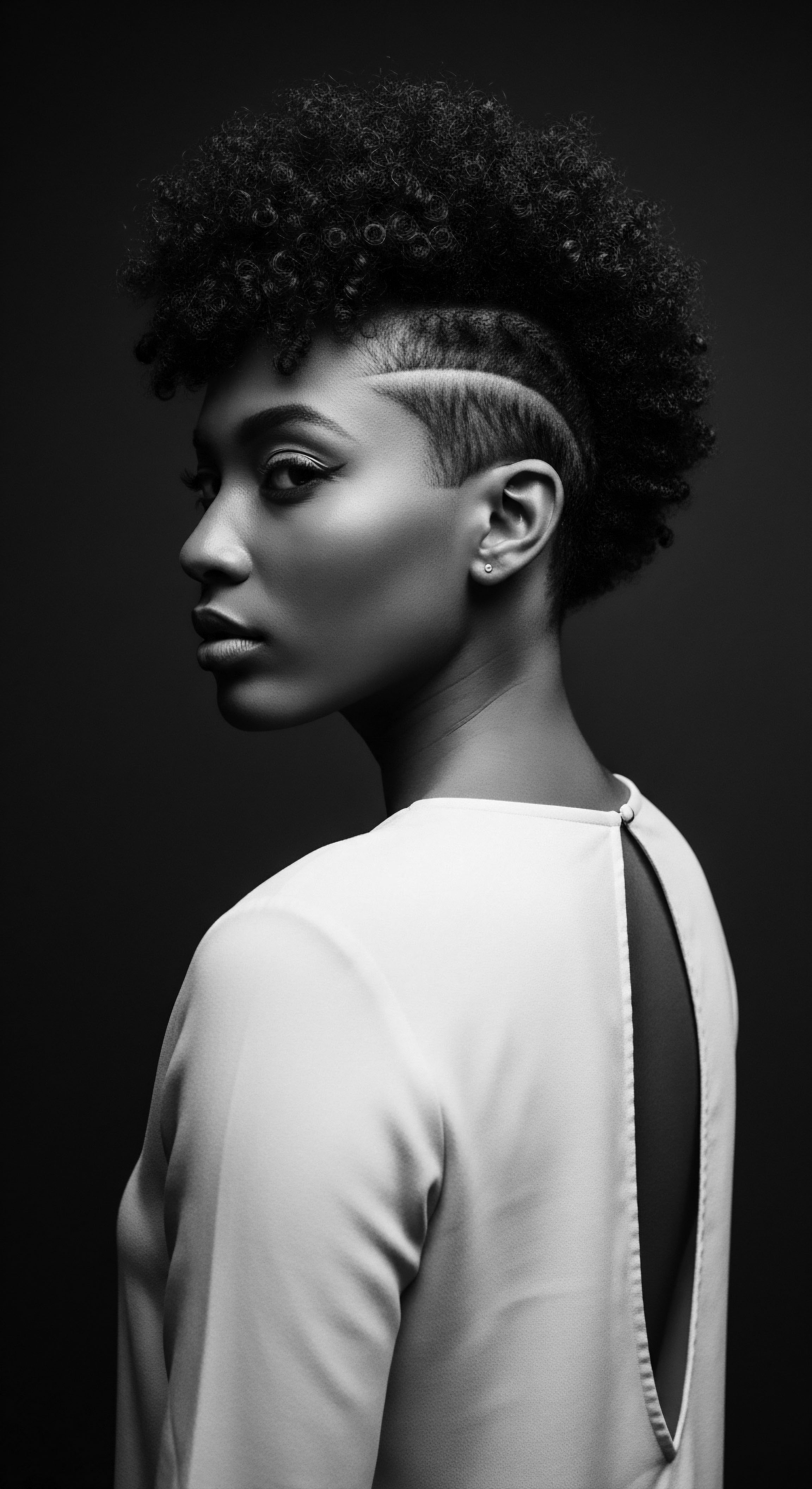
A Basic Blueprint of Vitality ❉ How Minerals Contribute to Hair Structure
Consider the hair strand not merely as a collection of fibers, but as a living filament, each component contributing to its remarkable resilience. Minerals, in their understated presence, are integral to this vitality. They act as microscopic building blocks and supportive scaffolding within the hair’s protein matrix, primarily keratin.
For instance, elements like sulfur, a key constituent of the amino acids cysteine and methionine, are indispensable for forming the disulfide bonds that grant textured hair its distinctive curl and strength. Without an adequate supply of these fundamental elements, the very architecture of the hair can be compromised, leading to fragility, diminished elasticity, and a muted vibrancy.
The interplay of these elements helps maintain the hair’s protective outer layer, the cuticle, ensuring it lies flat and smooth, thus reducing moisture loss and environmental damage. This fundamental understanding of mineral contribution forms the groundwork for appreciating the intricate balance required to preserve the inherent beauty and strength of textured hair, a balance often maintained through generations of inherited wisdom.

Intermediate
Moving beyond the elementary statement, the Mineral Composition of hair unfolds as a more nuanced subject, revealing the precise interplay of specific elements and their profound impact on the unique characteristics of textured hair. This intermediate explanation requires a deeper exploration of particular minerals and their functions, recognizing that their presence or absence can dramatically shape the hair’s behavior, its aesthetic appeal, and its susceptibility to environmental stressors. For those with coiled, kinky, or wavy hair patterns, this intricate balance is particularly significant, influencing everything from moisture retention to curl definition. The inherent nature of textured hair, with its often elliptical cross-section and numerous bends along the shaft, renders it more susceptible to certain challenges, making its mineral endowment a subject of particular importance.
The historical practices of Black and mixed-race communities, spanning continents and centuries, offer a profound illustration of an intuitive comprehension of these mineral dynamics. Long before scientific laboratories could quantify trace elements, ancestral knowledge systems guided the selection of natural ingredients, water sources, and care rituals that inherently supported a balanced mineral profile within the hair. This heritage of care, rooted in a deep connection to the earth and its offerings, stands as a testament to an enduring wisdom.
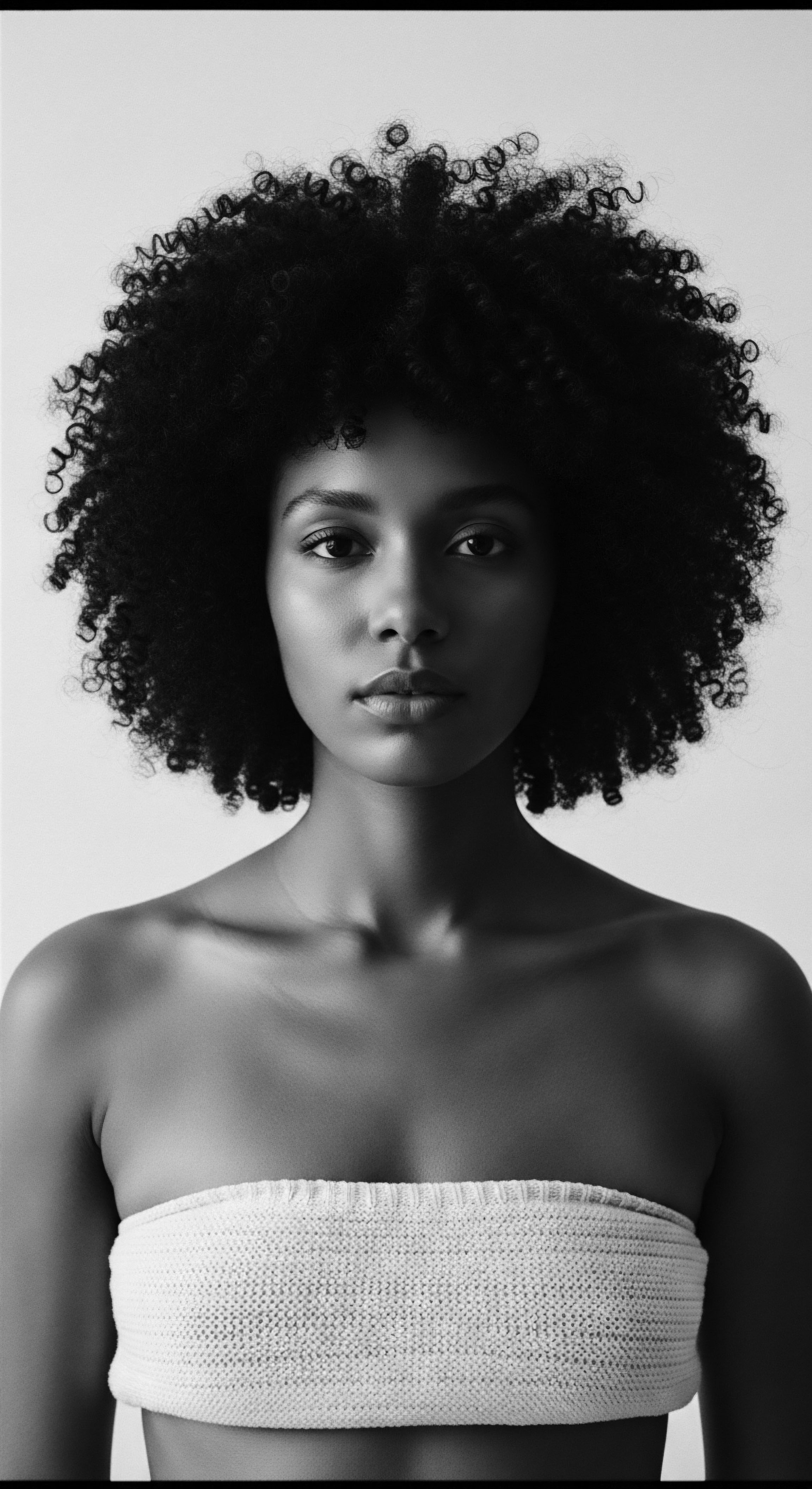
Guardians of the Curl ❉ Key Minerals and Their Roles
Within the complex structure of a hair strand, certain minerals serve as silent guardians, each playing a distinct role in maintaining its strength, flexibility, and appearance.
- Calcium ❉ A ubiquitous element, calcium contributes to the hair’s overall structural integrity. While excessive external calcium (from hard water) can lead to mineral buildup and stiffness, a balanced internal supply supports the hair’s resilience.
- Zinc ❉ Essential for cellular reproduction and protein synthesis, zinc plays a direct part in hair growth and repair. Its presence supports the health of the hair follicle, which is the very origin of the strand.
- Iron ❉ Crucial for oxygen transport to hair follicles, iron supports robust growth and prevents thinning. Deficiencies in this element can often be seen in compromised hair vitality.
- Sulfur ❉ Perhaps one of the most vital elements for textured hair, sulfur is a foundational component of keratin, the protein that forms the hair shaft. It forms the disulfide bonds that give hair its shape and strength.
- Magnesium ❉ Involved in numerous enzymatic reactions within the body, magnesium also contributes to overall hair health and can influence hair texture and resilience.
The delicate equilibrium of these elements is what allows textured hair to maintain its distinctive spring and luster. An imbalance, whether from nutritional deficits or environmental exposures, can manifest as dryness, brittleness, or a diminished ability to hold its natural curl pattern.

Ancestral Echoes in Every Strand ❉ Traditional Practices and Mineral Legacy
For generations, ancestral communities have cultivated hair care practices that, though perhaps not explicitly termed “mineral balancing,” inherently achieved this outcome through a profound relationship with natural resources. The application of certain clays, the use of specific plant-based infusions, and the reliance on local water sources all contributed to the hair’s elemental composition. This is not merely an anecdotal collection of rituals; it is a historical demonstration of how communities, through observation and inherited wisdom, understood the reciprocal relationship between their environment and their hair’s health.
The historical use of mineral-rich clays and plant extracts in traditional African hair care stands as a powerful testament to ancestral knowledge regarding hair’s elemental needs.
Consider the widespread historical application of various clays in traditional African beauty and wellness practices. For instance, the Himba women of Namibia traditionally cover their hair and bodies with a mixture of animal fat and red ochre , a type of clay rich in iron oxide, which imparts its distinctive reddish hue and offers protective qualities. Similarly, the use of Rhassoul clay , sourced from the Atlas Mountains in Morocco, has been a centuries-old practice in North Africa for both skin and hair care.
This particular clay is notably abundant in silicon and magnesium, alongside other minerals such as aluminum, calcium, sodium, and iron. Its application historically served not only as a cleanser but also as a conditioner, contributing to the hair’s softness and curl definition.
This traditional use of mineral-laden earth materials highlights an intuitive understanding of external mineral contribution to hair vitality. While modern science can now delineate the precise elemental composition of these clays, the ancestral practices themselves provided tangible benefits, suggesting a deep, experiential comprehension of hair’s elemental requirements. These practices illustrate a continuous thread of knowledge, where the wisdom of the earth was directly applied to the care of textured hair, fostering its strength and beauty.
| Aspect of Mineral Composition Source of Minerals |
| Traditional/Ancestral Approach Reliance on local plant life, natural spring waters, and mineral-rich clays (e.g. Rhassoul, ochre). |
| Contemporary Understanding/Practice Dietary supplements, filtered water, product formulations with specific mineral salts, professional hair treatments. |
| Aspect of Mineral Composition Method of Application |
| Traditional/Ancestral Approach Direct application of pastes, infusions, or oils derived from natural sources. |
| Contemporary Understanding/Practice Shampoos, conditioners, masks, and serums engineered for targeted mineral delivery or removal. |
| Aspect of Mineral Composition Perceived Benefit |
| Traditional/Ancestral Approach Increased strength, softness, growth, and cultural significance. |
| Contemporary Understanding/Practice Enhanced elasticity, reduced breakage, optimized moisture balance, scalp health. |
| Aspect of Mineral Composition Underlying Knowledge |
| Traditional/Ancestral Approach Empirical observation, inherited wisdom, connection to the land. |
| Contemporary Understanding/Practice Biochemical analysis, dermatological research, product science. |
| Aspect of Mineral Composition The enduring wisdom of ancestral care for textured hair often finds resonance in modern scientific understanding, bridging historical practices with current insights. |

Academic
The academic delineation of Mineral Composition in hair transcends a mere inventory of elements; it posits hair as a dynamic bio-indicator, a chronological archive of an individual’s systemic health, environmental exposures, and even, across populations, historical dietary and cultural practices. This perspective requires a rigorous analytical framework, recognizing that the hair shaft, as it grows, incorporates both essential and non-essential trace elements from the bloodstream and the external environment. The concentration and ratios of these elements within the keratin matrix offer a complex statement about an individual’s past and present physiological state, as well as broader anthropological and socio-environmental contexts. The examination delves into the intricate mechanisms of mineral incorporation, the factors influencing their variability, and the implications for understanding textured hair’s unique biomechanical properties and its historical journey.
From an academic lens, the Mineral Composition of hair becomes a subject of interdisciplinary inquiry, bridging analytical chemistry, nutritional science, environmental toxicology, and cultural anthropology. It provides a lens through which to comprehend not only the micro-scale interactions within the hair fiber but also the macro-scale influences of geography, climate, diet, and ancestral traditions on hair phenotype and health across diverse human populations. This expert-level consideration of mineral presence within hair necessitates a deep understanding of its significance as a biomarker, offering insights into human adaptation and resilience through time.
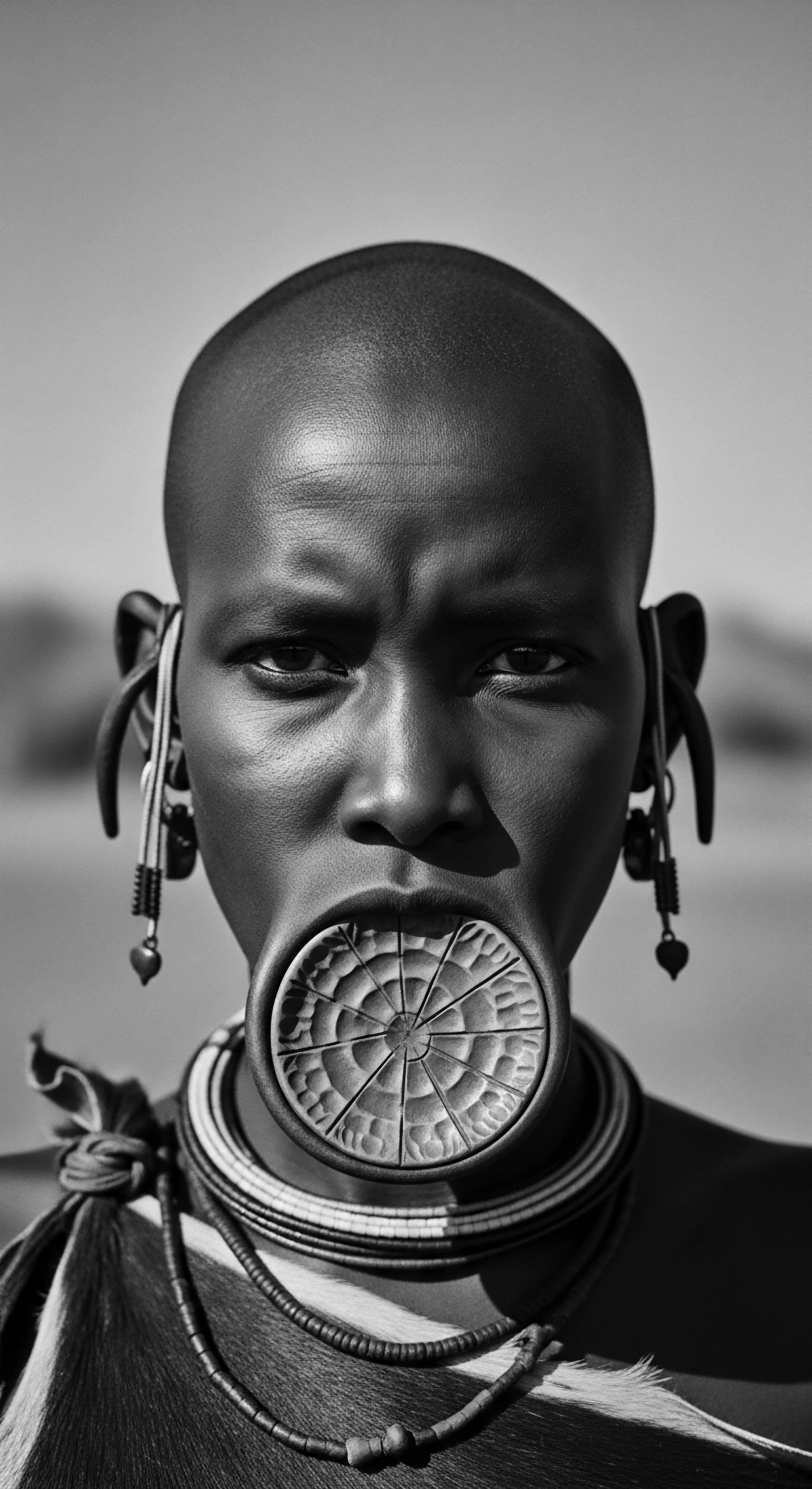
The Geochemical Signature of Identity ❉ A Deeper Look
Hair’s mineral profile is a complex geochemical signature, reflecting a confluence of endogenous and exogenous factors. Endogenous contributions stem from an individual’s metabolic processes, nutritional status, and genetic predispositions. Exogenous elements, conversely, arise from environmental exposure, including the mineral content of water, atmospheric particulates, and topically applied products. For textured hair, the unique morphology of the hair shaft, with its often flattened cross-section and numerous twists, can influence the absorption and retention of external substances, potentially leading to differential accumulation patterns compared to straighter hair types.
The precise determination of these trace elements typically involves advanced analytical techniques such as Inductively Coupled Plasma Mass Spectrometry (ICP-MS) or Atomic Absorption Spectrometry (AAS). These methods allow for the quantification of elements like calcium, magnesium, zinc, iron, copper, selenium, and even heavy metals, providing a comprehensive elemental picture. The interpretation of these data requires careful consideration of potential confounding factors, such as hair treatments (dyes, relaxers), which can alter mineral readings.
Hair’s mineral composition acts as a unique biochemical fingerprint, recording an individual’s dietary history and environmental interactions over time.
Beyond individual variations, population-level studies of hair mineral composition offer compelling insights into the interplay of human biology and environmental adaptation. Research by Muchaonyerwa, N. et al. (2017) , for instance, examined the elemental composition of different hair types in South Africa, including African hair.
Their findings indicated that African hair samples exhibited higher concentrations of certain essential minerals, specifically Calcium (Ca), Manganese (Mn), Zinc (Zn), and Cobalt (Co), when compared to White and Indian hair types in their study cohort. This particular observation, while requiring further contextualization regarding dietary patterns and environmental exposures specific to the studied populations, suggests inherent biological or historical adaptive differences in mineral uptake or deposition related to hair type.
This data point prompts a deeper consideration of how ancestral environments and traditional lifestyles might have contributed to distinct mineral profiles in textured hair over generations. It opens avenues for inquiry into whether certain mineral concentrations, perhaps once indicative of robust health within specific ecological niches, continue to manifest in the hair of diasporic communities, even when separated from their ancestral lands. This type of research underscores hair’s role as a biological repository, capable of narrating a subtle, yet profound, story of human origins and migration.

Biomarkers of Time and Tradition ❉ Hair as a Historical Record
The enduring significance of hair’s mineral composition extends into its capacity as a historical record. Unlike blood or urine samples, which reflect only recent physiological states, hair captures a longer-term exposure history due to its slow growth and the stable incorporation of elements into its keratin structure. This characteristic makes hair analysis a valuable tool for historical and anthropological studies, offering glimpses into the diets, health conditions, and environmental circumstances of past populations.
For communities with deep ancestral roots, especially those of Black and mixed-race heritage, hair becomes a tangible link to a collective past. It can reflect the mineral contributions from traditional foods, the effects of hard water in specific regions, or even the subtle impacts of traditional hair care ingredients sourced directly from the earth. The mineral signature within the hair of an individual today may carry echoes of practices observed by their forebears, connecting them to a continuous line of care and adaptation. This biological memory, etched in each strand, provides a unique lens for cultural historians and scientists alike to examine the material realities of ancestral lives.
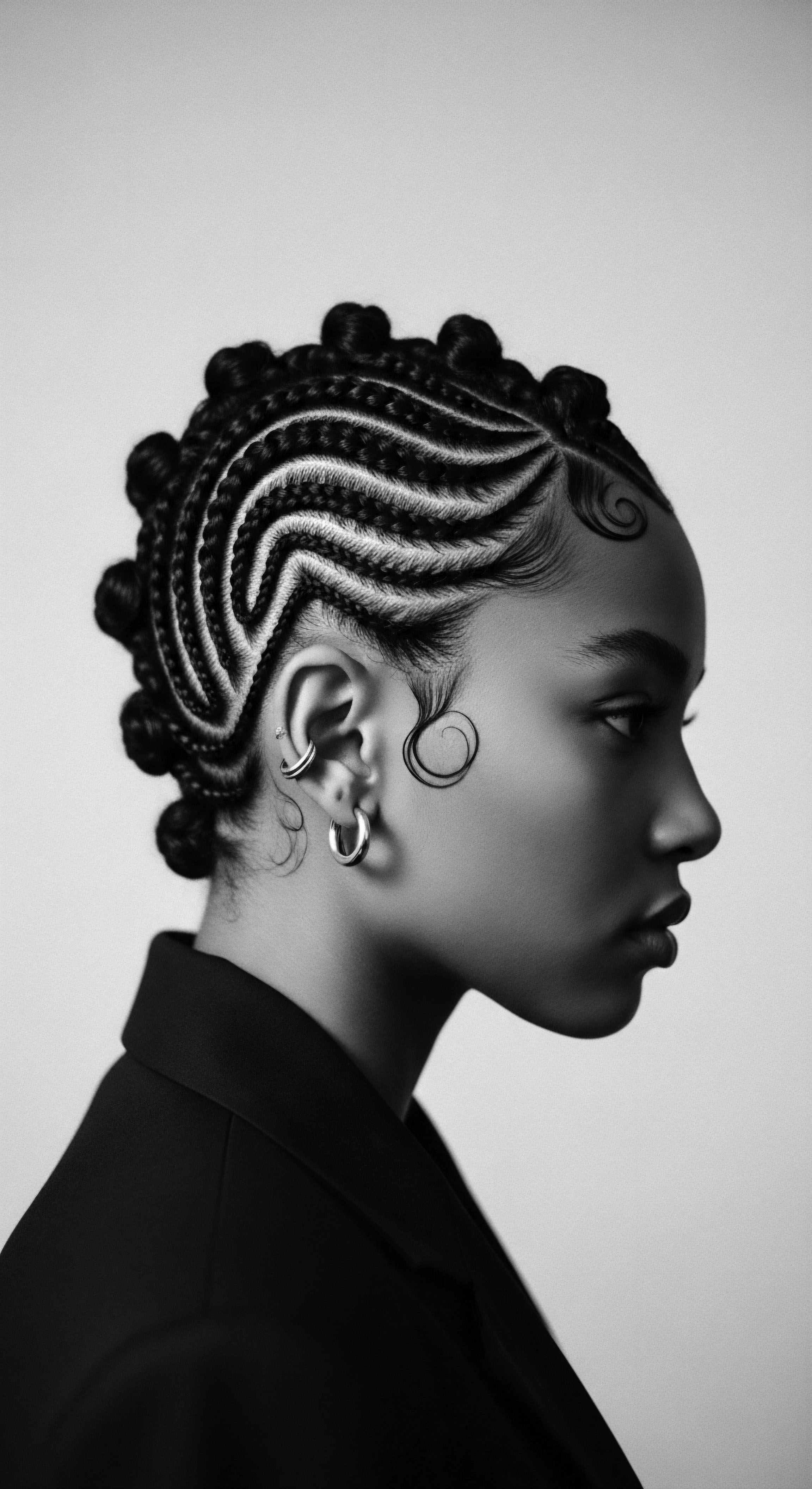
Diasporic Adaptations and Mineral Realities
The journey of textured hair across the diaspora has been one of remarkable resilience and adaptation, yet it has also been shaped by changing environments and access to resources. The mineral composition of hair within diasporic communities often reflects this complex history. For instance, the transition from traditional diets rich in indigenous, mineral-dense foods to more Westernized dietary patterns can alter the internal supply of essential elements, potentially impacting hair health. Furthermore, exposure to different water sources, with varying mineral hardness, can contribute to external mineral buildup on the hair shaft, particularly for highly porous textured hair, which can absorb more external elements.
The academic exploration of these dynamics helps to clarify the challenges faced by textured hair in contemporary contexts, such as increased breakage or dryness. It allows for a more informed appreciation of how traditional care practices, developed in harmony with specific environments, might offer valuable lessons for modern hair wellness. By examining the mineral story within textured hair, we gain a deeper understanding of its biological heritage and the ongoing need for care that respects its unique elemental requirements. This expert understanding contributes to a more comprehensive and culturally attuned approach to hair health, acknowledging the profound connection between science, history, and identity.
- Nutritional Shifts ❉ The move from ancestral food systems to new environments often altered dietary mineral intake, directly influencing the internal hair mineral profile.
- Water Hardness ❉ Different geographical locations present varying water mineral content, impacting external deposits on hair and necessitating adaptive cleansing rituals.
- Product Evolution ❉ The shift from natural, earth-derived ingredients to manufactured products introduces new mineral interactions, sometimes beneficial, sometimes detrimental.

Reflection on the Heritage of Mineral Composition
As we conclude this exploration of the Mineral Composition of hair, particularly within the context of textured hair heritage, we arrive at a profound understanding ❉ the story of our strands is inextricably linked to the story of our lineage. Each curl, each coil, each wave carries not only genetic coding but also the subtle imprint of the earth, the water, and the nourishment that sustained generations past. This journey, from the fundamental elements that build a strand to the complex tapestry of cultural practices that honor it, reveals a continuous dialogue between our bodies, our environments, and our ancestral wisdom.
The ‘Soul of a Strand’ ethos reminds us that hair is more than mere adornment; it is a living archive, a repository of history, resilience, and identity. The mineral composition within it speaks of ancient hearths where herbal infusions were prepared, of rivers and springs whose waters shaped cleansing rituals, and of lands that provided the very elements for growth and vitality. This knowledge invites us to approach textured hair care not as a trend, but as a continuation of a sacred tradition, a mindful engagement with a legacy of embodied understanding.
Our appreciation for hair’s mineral presence deepens our reverence for the ingenuity of our ancestors, who, without modern scientific tools, intuitively understood the elemental needs of their hair. Their practices, often rooted in the direct utilization of earth’s bounty, laid the groundwork for healthy hair traditions that persist to this day. As we look towards the future, this heritage calls upon us to harmonize scientific advancements with ancestral insights, ensuring that the care we offer our textured hair honors its deep past while supporting its vibrant future. The unbound helix of textured hair continues its journey, carrying the whispers of history and the promise of enduring beauty, shaped by the very minerals that connect us to the earth and to one another.
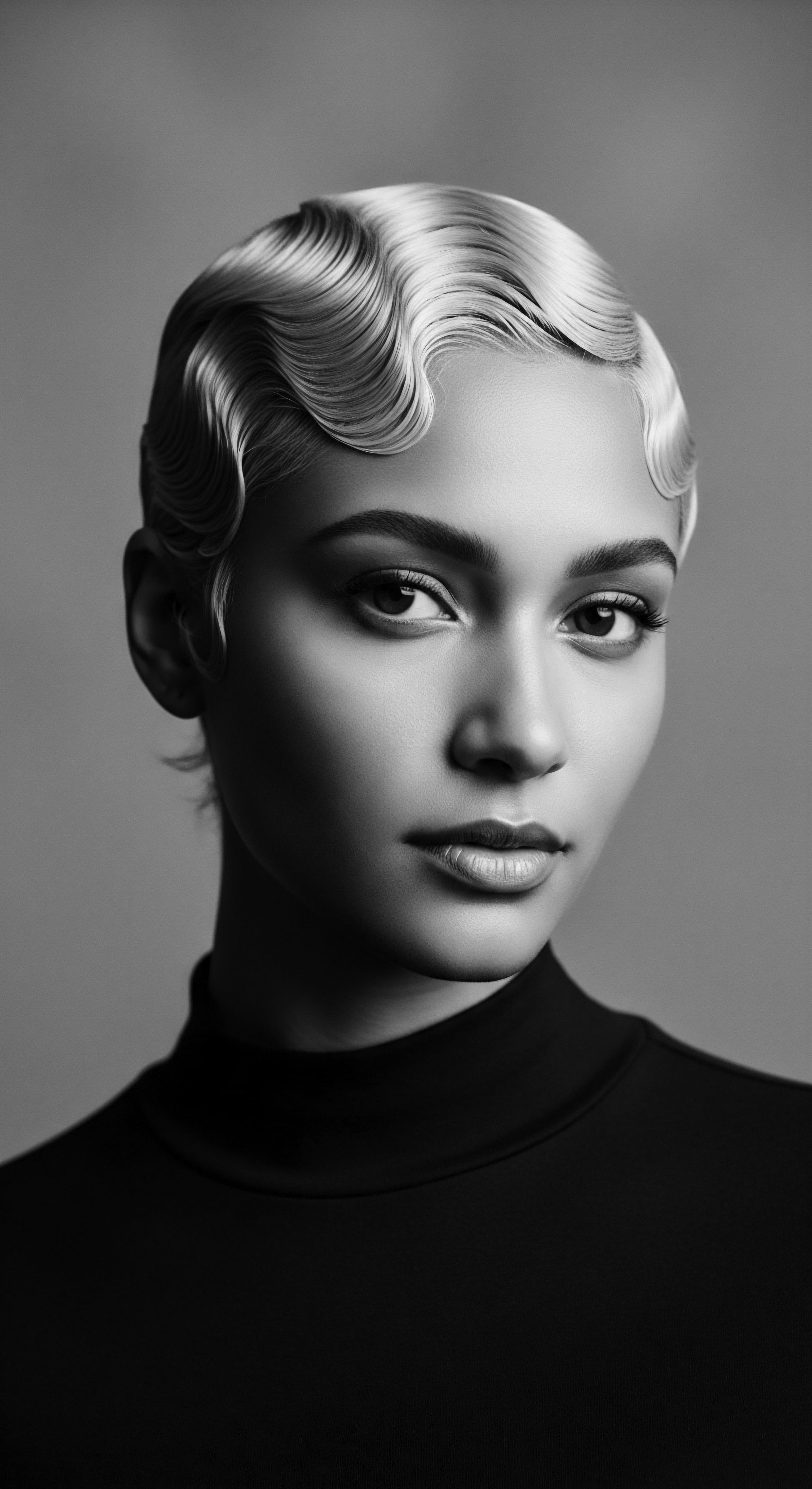
References
- Byrd, A. & Tharps, L. L. (2014). Hair Story ❉ Untangling the Roots of Black Hair in America. St. Martin’s Griffin.
- Dabiri, E. (2020). Twisted ❉ The Tangled History of Black Hair Culture. Harper Perennial.
- Muchaonyerwa, N. Chemeda, G. & Mariga, I. (2017). Hair from different ethnic groups vary in elemental composition and nitrogen and phosphorus mineralisation in soil. Environmental Science and Pollution Research, 24(10), 9600–9608.
- Sharaibi, O. J. Oluwa, O. K. Omolokun, K. T. Ogbe, A. A. & Adebayo, O. A. (2024). Cosmetic Ethnobotany Used by Tribal Women in Epe Communities of Lagos State, Nigeria. Journal of Complementary Medicine & Alternative Healthcare, 12(4), 555845.
- Weitz, R. (2004). Rapunzel’s Daughters ❉ What Women’s Hair Tells Us about Women’s Lives. Farrar, Straus and Giroux.
